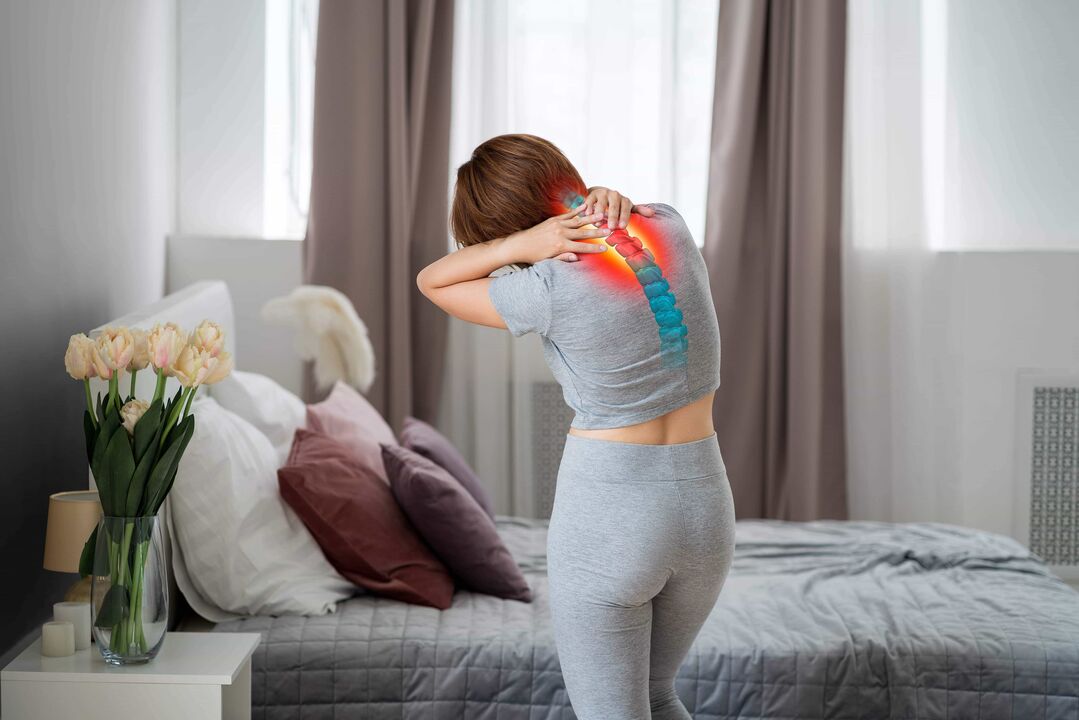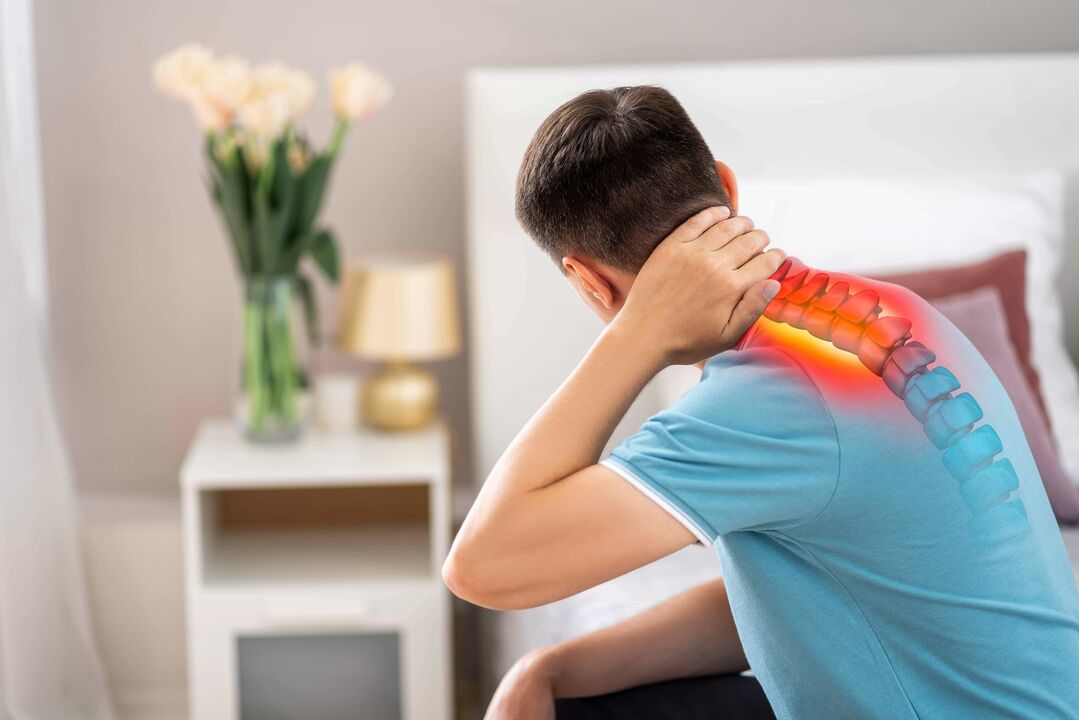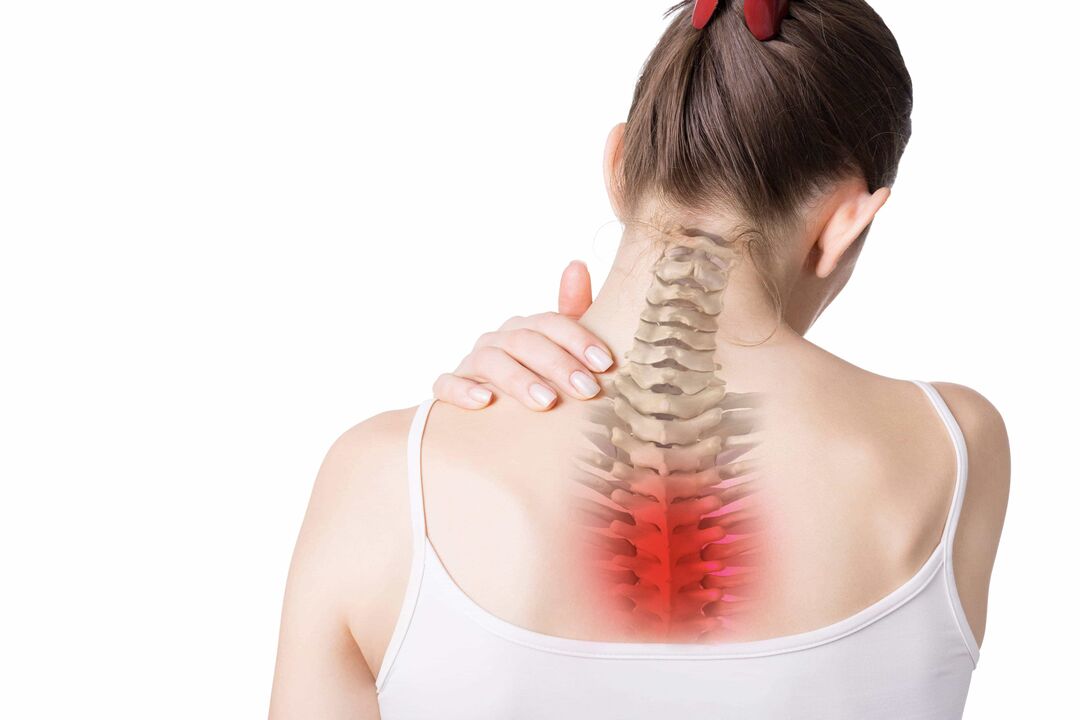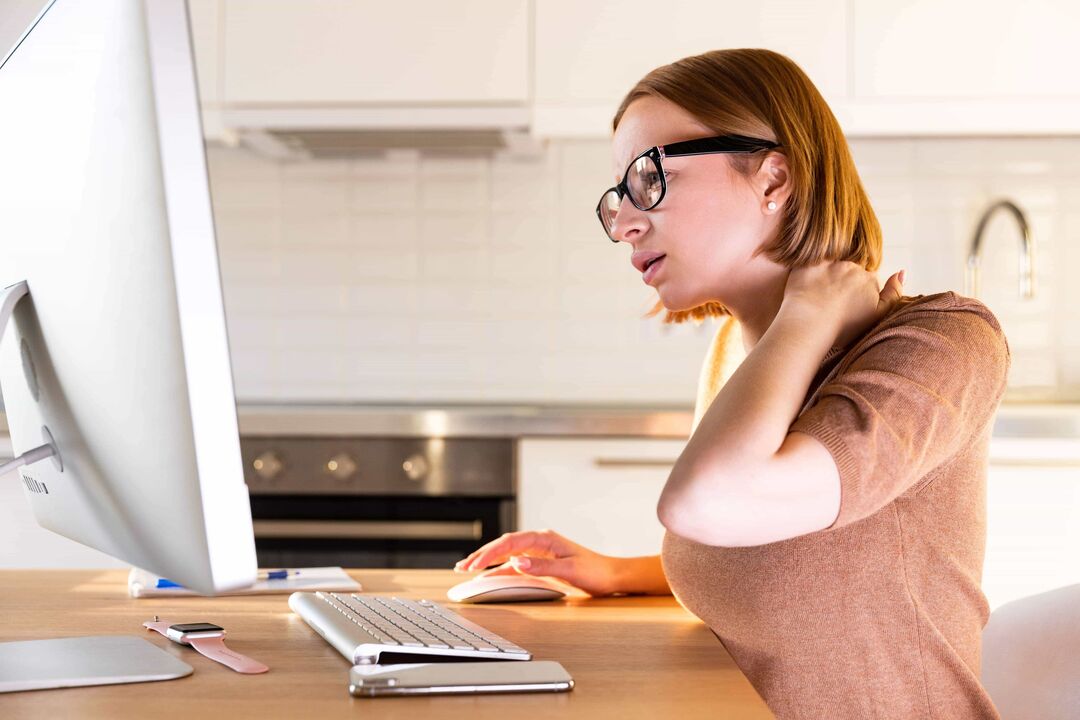Osteochondrosis is a common disease in which a person feels pain and limited movement in various parts of the back. Previously, it was believed that the disease was characteristic only of the elderly, but in recent years, young patients are increasingly suffering from osteochondrosis. According to statistics, every second inhabitant of the planet is prone to back pain.

The human spine consists of 32-34 vertebrae, which are connected to each other in a vertical position. Between the vertebrae are cartilaginous layers - the so-called discs. They ensure the flexibility and mobility of the spine during movement.
What is osteochondrosis? This is a disease of the spine, the basis of which is the destruction of the intervertebral discs and then the vertebrae themselves. Over time, these disc destructions lead to complications such as bulging (bulging of part of the disc) and vertebral herniation.
Most often, osteochondrosis affects residents of large cities. Sedentary work, resulting in lack of movement, leads to static overload of the spine.
The reasons
When a person walks, the load on the spine is unevenly distributed. The intervertebral discs are compressed, the distance between the vertebrae decreases, as a result of which the intervertebral cartilage tissue is destroyed. When the disease starts, the nerve roots are also damaged. In this case, a person may have pain in the area of the nerve roots, as well as tingling, burning, "crawling" sensations. Pain may occur when sitting in an uncomfortable position for a long time, with the arms or legs clenched. In addition, there are risk factors.
Osteochondrosis can trigger certain diseases of the locomotor system, for example: flat feet, scoliosis, musculoskeletal diseases. In addition, osteochondrosis can be found in endocrine pathologies, such as metabolic disorders, diabetes and thyroid diseases. Lifestyle also affects the course of the disease. If a person often remains in an uncomfortable position, stands or sits for a long time, leads a sedentary lifestyle, then all this leads to the destruction of the intervertebral discs. Malnutrition with an excess of fats and a lack of vitamins and minerals can also cause spinal problems. If a person has had injuries, bruises and operations on the spine, this can cause an exacerbation of osteochondrosis.
Heredity negatively affects the course of the disease.

Bad habits (smoking, excessive alcohol consumption) also have a negative effect on the spine. Nicotine adversely affects the metabolism, which causes the intervertebral discs to weaken. Excess weight puts extra stress on all parts of the spine, eventually damaging the intervertebral discs. A sedentary lifestyle is not good for the spine either. In the case of a lack of movement, the load on the back increases, the intervertebral discs are "erased", and the cartilages are damaged. In the case of excessive physical exertion and professional sports, microtrauma of the spine also occurs. The first symptoms of osteochondrosis do not necessarily appear immediately.
Types of osteochondrosis
Cervical
The neck is a very mobile part of the body, it turns to the side several times a day. There are seven small vertebrae in the neck, which are connected by special plates. The disease of this class is considered quite serious, since in the neck region there are many vessels (arteries and veins) and nerve roots that are responsible for important body systems. Cervical osteochondrosis often makes it difficult for the head to be saturated with blood, which is why the brain also suffers from it. It is believed that operations on this part of the spine can cause immobilization, that is, a violation of the movement of the whole body.
thoracic
The vertebrae in the thoracic region are not as mobile as the lower back and neck. For this reason, thoracic osteochondrosis is less common than other types. People who lift weights, as well as athletes, are more likely to suffer from this part of the back than others. There are cases when thoracic osteochondrosis is confused with heart attack and lung diseases. In order to establish the correct diagnosis, tests and medical consultation are necessary.
Lumbar (or lumbosacral)
The lumbar spine consists of five vertebrae connected by intervertebral discs. These vertebrae are large and strong, able to support the weight of the human body. However, if the metabolic processes are disturbed, the vertebrae quickly become less flexible and inflexible, and the nerve roots of the lower back are damaged. As a result, a person experiences severe lower back pain that radiates to the legs or groin.
If the sacral spine is also affected, such osteochondrosis is called lumbosacral. In this form, the defeat is stronger and more serious. It is difficult for a person to walk, sometimes paralysis of the legs occurs, because the spinal cord and nerve roots leading to the lower limbs are damaged. Possibly urinary incontinence.
Main symptoms
There are cervical, thoracic and lumbar osteochondrosis. The disease has several symptoms that depend on the extent of the lesion.
Symptoms of cervical osteochondrosis
The main symptom is neck pain, which is aggravated by turning and tilting the head. Painkillers help, but not for long. Dizziness and tinnitus are common. Some patients report numbness of the face and neck, weakness of the arms.
Symptoms of thoracic osteochondrosis
It occurs less often. With this type of osteochondrosis, a person feels pain in the chest area, between the shoulder blades. The pain is aggravated by bending and moving. There is a lump in the throat, and breathing becomes difficult. Numbness in the chest, pain in the heart and stomach may occur.
Symptoms of lumbar osteochondrosis
The most common type of this disease. The main symptom is lower back pain, which radiates to one or both legs, the groin, and the abdomen. The sensations arise especially often when turning to the side, tilting the body.

Diagnostics
Osteochondrosis is treated by a neurologist. In order to establish a diagnosis, he prescribes an examination. Basically, this is an X-ray of the affected back, if complications are suspected - protrusions and hernias of the spine, an MRI (magnetic resonance imaging) is prescribed. In some cases, an ultrasound of the vessels of the vertebral arteries is performed.
Treatment
Treatment of osteochondrosis depends on the stage of the disease, the age of the person and individual characteristics.
The goal of the therapy is to relieve pain, relax the muscles and prevent complications. The main group of treatment of the disease is non-steroidal anti-inflammatory drugs. These are drugs that relieve pain and eliminate inflammation. Anti-inflammatory drugs are available in the form of injections as well as tablets. Available on prescription.
In addition, muscle relaxants are used - drugs that relax spasmodic muscles, thanks to which muscle pain is reduced. It is usually used for external use. Such drugs reduce pain, create a "distracting" effect, i. e. warm or cool.
Topical agents are excellent for pain relief. Such ointments and creams relieve swelling, reduce inflammation and reduce pain at the site of injury.
The drugs have no cumulative effect and, importantly, they are dispensed without a prescription. These foundations reliably relieve pain in any part of the spine.
Among them, warming ointments can be distinguished - their effect appears in about half an hour. Their effect is to expand the blood vessels of the skin and inhibit the transmission of nerve impulses to the brain.
However, it is worth remembering that pain-relieving ointments can adversely affect the aggravation of diseases of the gastrointestinal tract.
In addition, there are other external agents - plasters, which also relieve pain and swelling. These patches are available without a prescription.
In addition to pain relief, prescribe drugs that restore nerve roots. These are B vitamins, which are prescribed in courses in the form of injections or tablets.
In addition to medication, the patient is required to wear special bandages and corsets. Such products relieve the spine, improve metabolic processes and strengthen the disc structure. Appointed after removal of the pain in the spine.
As we wrote above, in the case of osteochondrosis, the flexibility and mobility of the intervertebral disc deteriorates. To restore this important structure, chondroprotectors are used during treatment, these drugs restore cartilage and prevent its destruction. It is used only according to the doctor's instructions, in courses.
After the pain and inflammation are eliminated, healing is necessary. Physiotherapy is used for this: massage, acupuncture, electrical stimulation. The massage is prescribed no earlier than 3-6 months after the treatment. If a person has protrusions and hernias, spinal traction is recommended.
Practical therapy for osteochondrosis
Exercise therapy and gymnastics are an important addition to the treatment of osteochondrosis. It is a prerequisite that the exercises are performed only after the back pain subsides. For each patient, exercises are selected individually, depending on the age and characteristics of the body.
Osteochondrosis gymnastics improves blood circulation and metabolism, strengthens the back muscles. Thanks to this strengthening, spasms and overloading of the spine disappear, and the back becomes more flexible. The regularity of performance and the individual selection of exercises are important. In addition, exercise is a proven and effective way to prevent the development of the disease. That's why a little exercise in the morning and five minutes at work is good for your back.
How to sleep properly?
It is believed that sleeping on the back is the most beneficial. This is the most comfortable position for the spine, as all muscles are completely relaxed in this position. In addition, with lumbar osteochondrosis, it is recommended to place a small roller or pillow under the knee. It is not recommended to sleep on your stomach - it is harmful to the cervical spine.
In this position, the person turns his head, and as a result, important blood vessels and nerve roots in the neck are compressed, blood circulation is disturbed. Because of this, the blood does not reach the head enough, dizziness and headache occur, and numbness of the hand may also occur. The lateral body position is also considered acceptable.

Pillow and mattress
Mattress
For proper and healthy sleep, it is better to choose orthopedic products. The orthopedic mattress is useful for all parts of the spine, it allows maintaining the natural anatomical curve - this improves the blood circulation of the back. The back muscles on such a mattress are in the most comfortable and relaxed state, and you get enough sleep.
The mattresses are different: hard, soft, medium hardness. It is worth choosing individually.
- For children and teenagers, a mattress of medium and high hardness will be useful.
- A moderately hard mattress is recommended for people over 25 with a healthy back.
- In case of scoliosis and other back diseases, it is worth buying a hard mattress.
Pillow
Choosing a pillow is an important factor in healthy sleep. It should be soft and comfortable enough to support the curves of the spine and relieve tension in the neck muscles. The pillow has a beneficial effect on sleep, relaxes the neck region and the head, and improves blood circulation. These pillows help you maintain your posture as well as get rid of snoring.
I would add that a healthy sleep requires comfort and a favorable environment. Do not get nervous before going to bed, avoid physical activity. Take a relaxing bath with salt or herbs (lavender, chamomile). You should sleep in a well-ventilated room with humidity (40-60%).
Prevention
It is probably no secret to anyone that prevention is always easier and cheaper than treatment. It is necessary to take care of the spine from childhood. During classes and meals, it is important to monitor your posture and choose the right furniture.
If you do sedentary work, try to interrupt it every two hours, take a five-minute break during gymnastics. Try not to stand in one position for a long time - this increases the load on the back. For sleeping, choose a firm mattress without springs. Engage in physical activity. Swimming, fitness, dancing - choose active leisure activities.
Try not to lift weights in one sitting. It is better to divide the load into several parts. Don't lift heavy things with one hand - distribute the weight between both hands. Take vitamins and microelements, group B vitamins, vitamins D, E, calcium, phosphorus, especially useful for the back.
Consult a doctor if you have back pain.
Watch your back!

























